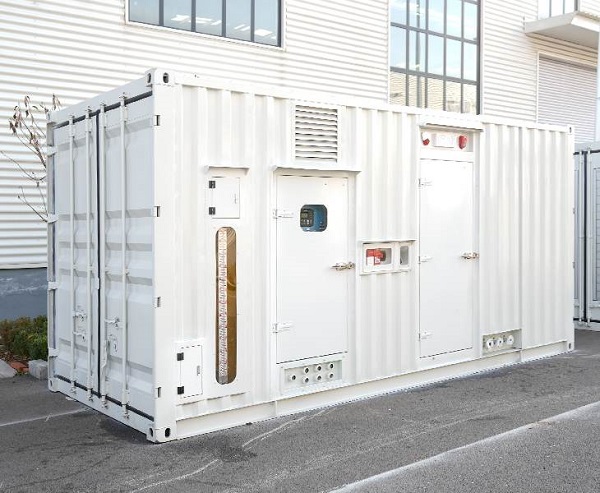
Against the backdrop of global energy structure transformation,
containerized energy storage stations, as an innovative energy storage and management solution, are gradually attracting attention. They not only provide crucial support for the growth of renewable energy but also demonstrate unique advantages in areas such as power dispatch, load balancing, and emergency power supply. This article will analyze in detail the operating mechanism, application areas, advantages, challenges, and future development directions of containerized energy storage stations.
I. What is a Containerized Energy Storage Station?
A containerized energy storage station is a modular energy facility that integrates an energy storage system within a standard shipping container, facilitating transportation and deployment. This energy storage method typically employs different types of battery packs, such as lithium-ion batteries, lead-acid batteries, and fluid batteries, combined with an advanced energy management system to achieve real-time management and control of electrical energy. The design of containerized energy storage stations not only emphasizes efficiency and safety but also facilitates rapid deployment, is highly adaptable, and can be used in various scenarios.
II. Operating Principle of Containerized Energy Storage Stations
The operating principle of containerized energy storage stations is relatively simple. It primarily achieves the storage and release of electrical energy through the following steps:
1. Charging Mode: During periods of low electricity demand (such as nighttime), the energy is charged using renewable energy sources (such as wind and solar power) or cheaper electricity, storing the energy in the battery packs.
2. Storage Mode: The energy is stored within the container, and the battery packs are maintained in optimal condition through an intelligent control system, ensuring that the energy can be released at any time.
3. Discharging Mode: During peak electricity demand periods, or when the power grid experiences a fault, the containerized energy storage station can rapidly release the stored energy, providing stable power support and ensuring the stability and reliability of the power supply.
Through the above process, containerized energy storage stations can effectively regulate grid load, improve energy utilization efficiency, and reduce electricity costs.
III. Application Scenarios of Containerized Energy Storage Stations
The flexibility of containerized energy storage stations allows for applications in multiple scenarios, including:
1. Renewable Energy Grid Connection: Containerized energy storage stations can serve as auxiliary facilities for wind and solar power generation, helping to mitigate the instability of renewable energy generation and thus balancing grid load.
2. Peak Power Shaving: During peak electricity demand periods, containerized energy storage stations can rapidly discharge to the grid, reducing grid load and avoiding large-scale power switching and equipment damage.
3. Emergency Power Supply: In the event of grid outages due to natural disasters or faults, containerized energy storage stations can provide emergency power, ensuring power supply for critical facilities.
4. Microgrid Construction: In remote areas or islands with insufficient grid coverage, containerized energy storage stations can independently build microgrids, providing self-sufficient power solutions.
IV. Advantages of Containerized Energy Storage Stations
1. High Efficiency: Containerized energy storage stations utilize high-performance battery technology to achieve rapid charging and discharging, effectively improving energy utilization efficiency.
2. Flexibility: Its modular design simplifies the installation, relocation, and expansion of containerized energy storage stations, enabling rapid adaptation to various environmental needs.
3. Environmentally Friendly: By rationally utilizing renewable energy, containerized energy storage stations help reduce carbon emissions and environmental pollution, promoting sustainable development.
4. Economic Efficiency: Although the initial investment is higher, the economic benefits from electricity price fluctuations and peak-valley electricity differences allow for a recovery of the investment within a certain period.
V. Challenges Faced by Containerized Energy Storage Stations
Despite the numerous advantages that containerized energy storage stations demonstrate in technology and the market, they still face several challenges:
1. Technology Costs: High-efficiency battery technology remains limited by cost, especially the price fluctuations of lithium batteries, which may affect the overall economic viability of the project.
2. Safety Issues: Batteries may experience thermal runaway under extreme conditions such as high temperature and high current, posing a risk of fire and explosion, thus requiring strengthened safety management.
3. Insufficient Policy Support: Some countries and regions still lack sufficient policy support, with a lack of relevant regulations and incentive mechanisms, affecting the promotion and application of containerized energy storage stations.
4. System Integration Issues: Differences in equipment and technology from different manufacturers may increase the difficulty of system integration, thus requiring strengthened research on standardization and compatibility.
VI. Future Development Trends
Looking ahead, the development of containerized energy storage stations will see the following trends:
1. Technological Advancement: With the continuous advancement of battery technology, the application of new energy storage materials will help reduce costs, improve safety, and enhance energy density.
2. Intelligent Management: The application of IoT and AI technologies will enable intelligent monitoring and remote management of containerized energy storage stations, improving operational efficiency and flexibility.
3. Increased Policy Support: Governments worldwide will provide greater support for clean energy and its supporting infrastructure, promoting the introduction and implementation of policies.
4. Rising Market Demand: With the popularization of electric vehicles and the increase in the proportion of renewable energy, the demand for energy storage facilities will continue to grow, driving the expansion of the containerized energy storage station market.
5. Green Supply Chain Construction: Under the backdrop of sustainable development, containerized energy storage stations will become part of a new green supply chain, contributing to the global energy transition.
In conclusion, containerized energy storage stations, with their multiple advantages such as high efficiency, flexibility, and environmental friendliness, have become an important driving force for the global energy transition. To address future development challenges, the industry needs to strengthen cooperation, promote technological innovation, and jointly build a more sustainable and intelligent energy system.
